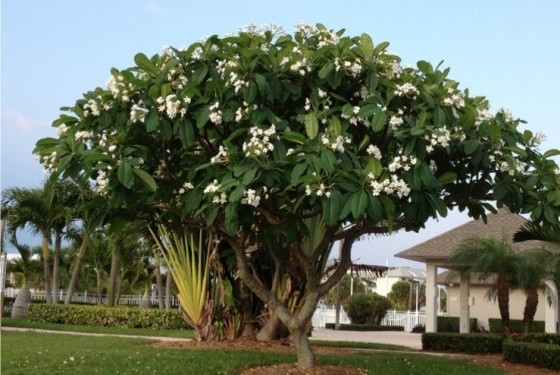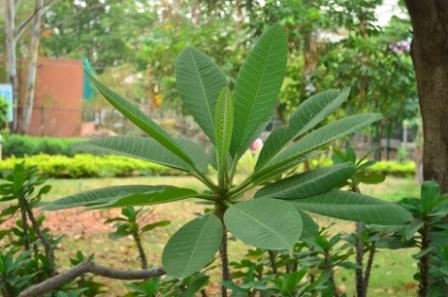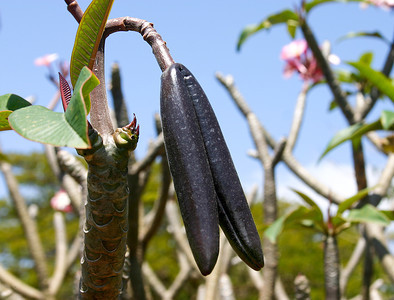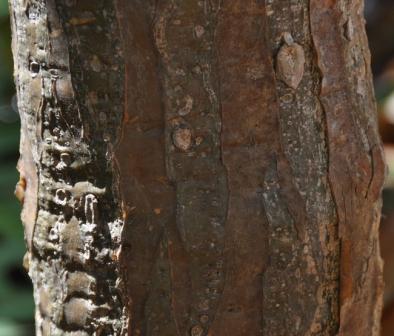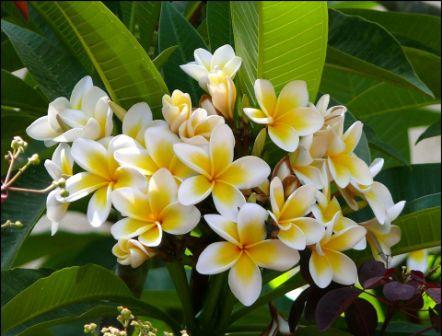White Frangipani
Plumeria alba
Description
General Information :
- White Frangipani can grow as either a small shrub or tree ranging in height from 0.9-6.1 m with widely spaced thick succulent branches.
- The leaves are clustered near the tips of the branches. The leaves are dark and leathery and tend to be shiny on the upper surface.
- The flowers of this species are borne in clusters that form at the ends of the branches on a long thick stalk.
- The fruit of this species is a dry follicle which splits along one side to release the winged seeds.
Distribution :
-
Native to Central America and the Caribbean, it is now common and naturalized in southern and southeastern Asia.
Habitat : Tropical and sub-tropical climates.
Soil : Succeeds in a range of soils so long as they are well-drained
Altitude :Up to 2,000 metres
Rainfall :750 mm to 1500 mm
Temperature : Upto 40 deg C
Terrain : Plains, hills and coastal plains
Tree Characteristics :
- Established plants are very drought tolerant.
Habit : Evergreen Tree
Planting Guidelines
Natural Regeneration :
- Naturally regenerated by seeds.
Artificial Regeneration :
- Artificial reproduction is common by Nursery raised seedlings.
Seed collection and Storage :
- Flowering and fruiting: March-May.
- Pods are then dried in the sun and broken to extract the seeds and stored in gunny bags.
Seed Treatment :
- No Pretreatment Required.
Nursery Technique :
- Seeds can be sown in semi-shade, either in nursery beds or in individual containers. When fresh seed is used, a germination rate in excess of 80% usually occurs within 8 - 15 days.
- Seedlings should be placed in individual containers by the time they are 6 - 10cm tall, and are ready to plant out when 7 months old.
Plantation technique :
- Dig pits of 30 cm3.
- Fill up the pits with top soil mixed with 10 Kg of FYM and 1 Kg of Neem cake per pit.
- The seedlings are generally planted in pits having the size of 30x30x30 cm. The most common spacing adopted for plantation is 5m x 5m. On road sides, deeper pits of the size of 45 x 45 x 45 cm are preferred.
Care & Disease Control :
- In early stages weeding is necessary. In second year, soil working is important.
Major uses :
- The flowers, Root, Seed and Latex are used as a medicine.
- Flowers used in Pooja.
- The light brown wood is hard, heavy, and tough. It is used in carpentry where the tree grows to sufficient size.
- The wood is used for fuel.


